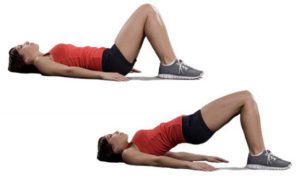Back pain can be a chronic and debilitating condition that affects millions of people around the world. If you’ve ever experienced the discomfort of back pain, you know how it can interfere with your daily life. The good news is that incorporating common back pain relief exercises into your routine can provide significant relief. Let’s take a look at some simple yet effective exercises that can help you manage and relieve back pain.
About Back Pain :
Back pain comes in many forms and can be caused by many factors. It’s important to understand the type of back pain you’re experiencing – whether it’s acute, lasting a few days to weeks, or chronic, lasting months or even years. Common causes of back pain include muscle or ligament strains, herniated discs, arthritis, and poor posture.
Understanding the Cause: Common Causes of Back Pain :
Before we get into exercises, let’s understand what might be causing your back pain. Often, it’s the result of everyday activities, such as
1. Poor posture: Slouching while sitting or hunching over your phone puts extra strain on your back muscles.
2. Injury: A sudden twist or strain can leave your back feeling sore and stiff.
3. Overuse: Repetitive motions, especially lifting heavy objects with improper form, can take a toll on your back.
Benefits of exercise for back pain :
Regular exercise is an effective way to reduce back pain. It strengthens the muscles that support your spine, improves flexibility, and promotes better posture. Exercise also releases endorphins, which act as natural painkillers, providing relief and improving overall well-being.
Top Exercises to Reduce Back Pain :
1. Pelvic Tilts

How to do it:
- Lie on your back with your knees bent and feet flat on the floor.
- Tighten your abs.
- Flatten your back against the floor by tilting your pelvis upward.
- Hold for a few seconds, then relax.
- Repeat 10-15 times.
Benefits:
Pelvic tilts help strengthen the lower abdominal muscles and reduce stiffness in the lower back.
2. Knee-to-Chest Stretch
 How to do it:
How to do it:
- Lie on your back with your knees bent and your feet flat on the floor.
- Bring one knee up to your chest while keeping the other foot on the floor.
- Hold for 15-30 seconds.
- Repeat with the opposite leg.
- Perform 2-3 repetitions with each leg.
Benefits:
This stretch helps relax the lower back muscles and relieve tension.
3. Cat-Cow Stretch
 How to do it:
How to do it:
- Start on your hands and knees in a tabletop position.
- Inhale, arch your back, and look up at the ceiling (cow pose).
- Exhale, arch your back, and tuck your chin toward your chest (cat pose).
- Repeat for 1-2 minutes.
Benefits:
The cat-cow stretch increases flexibility in the spine and stretches the neck, shoulders, and torso.
4. Child Pose
 How to do it:
How to do it:
- Start on your hands and knees.
- Sit back on your heels and extend your arms forward on the floor.
- Lower your chest to the floor.
- Hold for 20-30 seconds.
- Repeat 3-5 times.
Benefits:
The child’s pose gently stretches the lower back, hips, and thighs, promoting relaxation and release of tension.
5. Bird-Dog Exercise
 How to do it:
How to do it:
- Start on your hands and knees in a tabletop position.
- Extend your right arm forward and left leg back, keeping your back straight.
- Hold for a few seconds, then return to the starting position.
- Repeat with the opposite arm and leg.
- Do 10-15 repetitions on each side.
Benefits:
Bird-dog exercise improves balance and strengthens the lower back and core muscles.
Tips for safe exercise :
To avoid injury and maximize benefits, follow these tips:
- Warm-up: Always start with a warm-up to prepare your muscles.
- Proper Form: Focus on maintaining good form to avoid strain.
- Listen to Your Body: If an exercise causes pain, stop immediately.
- Gradual Progression: Increase intensity and duration gradually to avoid overexertion.
When to see a doctor :
Although exercise can help with back pain, it’s important to know when to see a doctor. Consult a doctor if you experience severe pain, numbness, or weakness. Persistent back pain may indicate a more serious condition that requires medical attention.
Expert Recommendation :
For consultation and treatment plans for back pain, consider consulting Dr. Rajeev Gawhale, an experienced orthopedic doctor in Phursungi. His expertise can help you develop a more appropriate approach to managing and relieving your back pain effectively.
Conclusion :
Adding these common back pain relief exercises to your daily routine can lead to significant improvements in your condition. Remember, consistency is the key. Stay active, follow safe exercise tips, and listen to your body’s cues.






